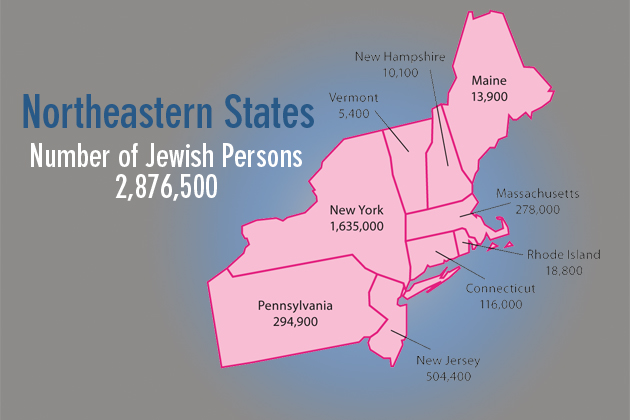
The most recent summary report of the Jewish population in the United States has been published by the Mandell L. Berman Institute–North American Jewish Data Bank at the University of Connecticut.
Produced in a folded, pocket-sized brochure, the “Pocket Demographics: US Jewish Population” is a compilation of data published over the past decade that states that Jews represent about 2 percent of the population of the United States, estimated at approximately six million people.
Arnold Dashefsky, director of the North American Jewish Data Bank in UConn’s Center for Judaic Studies and Contemporary Jewish Life, says determining a precise number for the U.S. Jewish population is always a challenge because of varying methods of gathering information and the fact that their small size renders Jews a “rare population.”
“The issue is not who is a Jew, but who counts as a Jew,” says Dashefsky, who is a professor emeritus of sociology in the College of Liberal Arts and Sciences. “No sociologist of any character, whatever his or her religious ideology might be, applies the religious legal definition that traditional Judaism applies – namely that one is born of a Jewish mother or is a convert to Judaism. Rather, the studies tend to ask whether the respondent defines himself or herself as Jewish.”
Surveys of the Jewish population in the United States between 2000 and 2011 have reported a range of numbers between 5 million and 6.5 million. The information used in the North American Jewish Data Bank publication includes published reports from the National Jewish Population Survey (2000-2001), American Jewish Identity Survey (2001, 2008), Survey of Heritage and Religious Identification (2001-2002), Steinhardt/Brandeis Meta-Analysis (2011), the North American Jewish Data Bank report (2011), over 70 local community study surveys, and an intensive effort by the Data Bank to “count” Jewish persons in non-surveyed communities.
“Most people would say 5.2 million is too low and 6.6 million is too high, which we acknowledge,” Dashefsky says. “But the latter number is what you get when you add up the regional numbers of community estimates.”
Ron Miller, associate director of the Jewish Data Bank, notes that the information in the pocket brochure dispels a misconception that the population of American Jews is entirely in the Northeast. The regional data show that the Jewish population in the United States includes 2.9 million people in the Northeast, 1.6 million in the West, 1.4 million in the South, and 700,000 in the Midwest.
“I would be happy if members of Jewish Federations and communal organizations could use this document in their interactions with the real world,” Miller says. “They often go into places and are asked for a quick summary of the Jewish community, nationally or locally or in the largest cities. It’s a fact sheet.”
The brochure includes a regional breakdown of Jewish households, individual persons, intermarried couples, denominational preference, and philanthropic giving, among other information. There is also a listing of the Top 50 American Jewish Metropolitan Areas, based on the 2011 Jewish Data Bank report.



